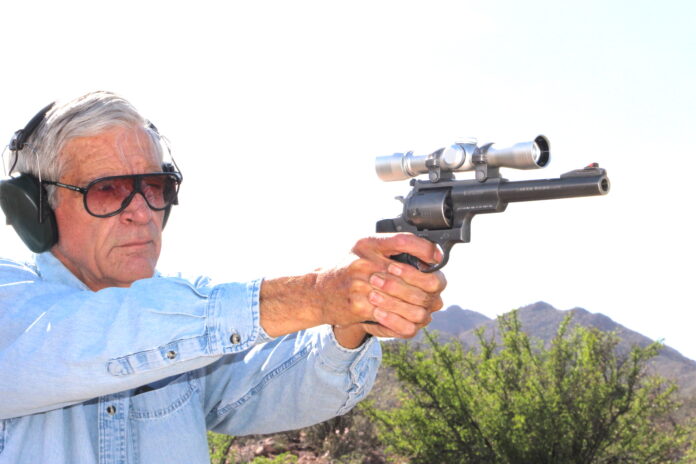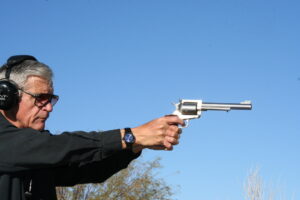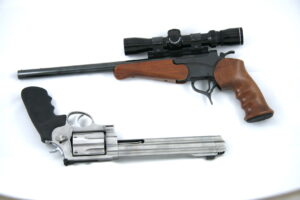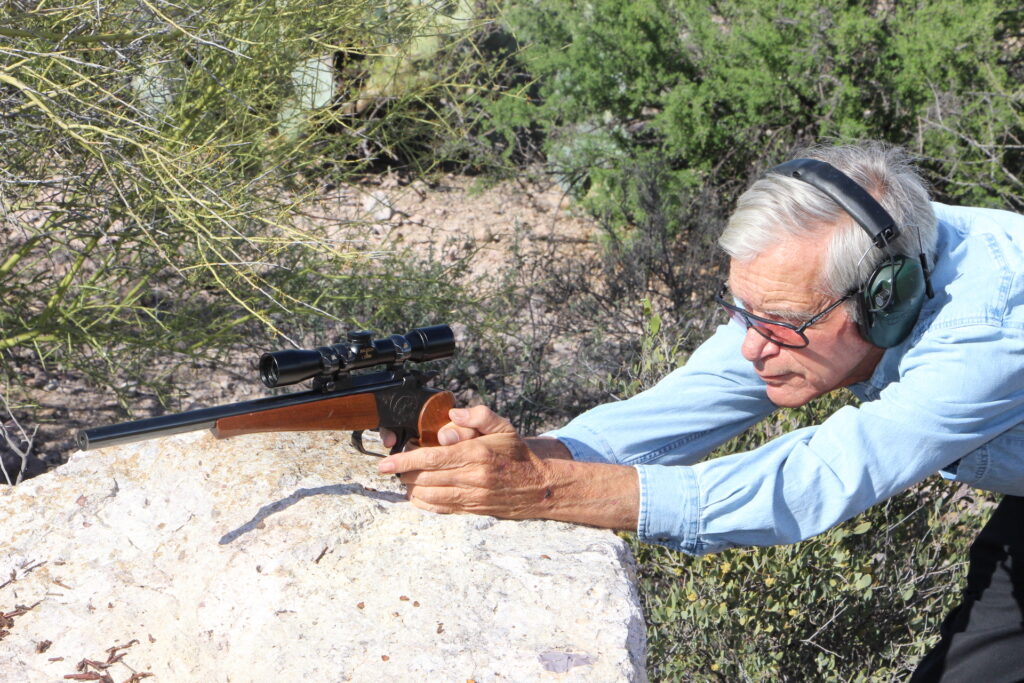
BY STEVE COMUS
The best choices for hog hunting calibers during the late spring and early summer can be a bit different from those in the cooler times of the year. This is because of the way the wild porkers behave.
As the weather warms up, wild pigs tend to become more nocturnal as a way for them to avoid the hottest parts of the day. That means that they usually are not out in the open for as long each day as they are in the fall, winter and early spring.
When pigs are in the open, longer shots are not only possible, but predictable. There, we’re talking some of the belted magnums like 7mm Rem. Mag. or .300 Win. Mag. on the traditional front, or 6.5 PRC or .300 PRC on the high-tech font.
Other cartridges can work, but when shots likely will be long, why not use cartridges that are designed for such use?
But if the amount of daylight in which the pigs are out is short at both the beginning and end of the day, it is a good strategy to equip for all of those hours in between when the pigs likely will not be in the open.
Where do the pigs go during most of a hot day? They head for the coolest areas they can find. This means at least heavy shade and also can mean anywhere close to a water source, whether it is a minor drip in the hills to a stream, lake or even a stock pond.
These areas, even if they are nothing more than the bottom of an arroyo, typically are covered in thick brush. And it is difficult sometimes to kick pigs out of the thick stuff from afar.

What this means is that it is time to do some game driving by literally crunching into the thick stuff and kicking the hogs from cover. When it comes to proper guns and ammo for driven hunts, think quick shots at close range.
Here is where lever-action and semi-auto carbines come into play for hunters who like long guns, or it can be a great time to use what I call substantial handguns – the big stuff. After all, the object is not simply to hit the pig, but to put it down.
Wounded game in thick cover can be hard to find and it can get interesting if the critter is big enough to fight back when wounded. Hence, hit it right and hard in the first place.
This time of year, it is not a bad idea to have at least two different gun/ammo rigs handy – a longer-range centerfire rifle for pigs in the open and a hunting handgun or carbine for the up-close-and-personal stuff.
For the longer-range rigs, as mentioned above, any of the belted magnums or their high-tech counterparts work fine. Add to that list the other usual suspects like .30-06 Springfield, .270 Winchester or .308 Winchester.

BIG BOY HANDGUNS for hogs include the Smith & Wesson Model 500 in .500 S&W Mag., bottom, and the Thompson/Center Encore in 7mm BR Rem.
I have had good luck with a Model 7 Remington in 7mm-08, a Remington 700 Mountain Rifle in .280 Remington and a Model 700 Remington Titanium in .260 Remington – which means that the 6.5mm Creedmoor and its ilk also can work great. These are all good at least to the 250-yard line.
For carbines to be used in and around the thick stuff, consider .357 Mag. and .44 Mag. to be minimal. Better are the .30-30 Winchester or .45/70 Govt. chamberings. This also assumes the .32 Winchester Special is fine, as is the .38/55 Winchester for those who have any of those old carbines or rifles.
But for this writing, why not focus on hunting handguns for hogging?
On the hunting handgun front for brush hogging, consider .357 Mag. to be minimal. Either the .41 or .44 Mag. is quite good, and the .45 Colt also can work well in this kind of setting.
For those who like auto handguns, the 10mm Auto with the heavy bullets can work fine for hogs. They are close in performance to the .41 Mag. but aren’t quite as powerful. I once shot some hogs in Texas with the 10mm Auto. It was the year that Colt introduced the Delta Elite in 10mmAuto, and it worked fine. I still have that gun, but don’t shoot it much anymore.
For a number of years, I carried a Ruger Blackhawk with a 4½-inch barrel in .45 Colt as a secondary arm to my rifle on hog hunts in Central California. It worked great when I had to crawl into the brushy “tunnels” after hogs. It also served well for coups de grace occasions.
Over the years, I have come to consider the .44 Mag. as the most powerful of what I consider to be “recreational” handgun cartridges for hogging. By this, I mean a cartridge that I shoot just for the fun of it as well as for more serious hunting.
However, when the hunting gets more serious and/or involves game that can take a hard hit, I switch to what I consider to be very serious handgun hunting cartridges. These include the .454 Casull, .460 S&W, .480 Ruger (or .475 Linebaugh), .50 Action Express and .500 S&W for revolvers and anything from .30-30 Win. and .308 Win. to .375 JDJ for single-shot handguns.
None of these is an entry level handgun cartridge and some of them can actually cause some hurt if not handled properly. But when handled correctly, they are outstanding hunting cartridges that can add an incredible dynamic to a hunt. Literally, they can elevate a rather routine hunt into something to remember forever.
It may sound odd, but of all of those cartridges, my two favorites for hogging are the .50 Action Express and the .500 S&W. I prefer the .454 Casull and .480 Ruger revolvers for deer.
Both the .50 Action Express and the .500 S&W deliver a really big wound channel, which is nice when anchoring a wild boar. Of the two, the .50 Action Express is the more comfortable to shoot. It is much like a super-sized .44 Mag. when it barks. The .500 is different.
Although it is possible to download the .500 S&W to what some call .500 Special velocity, I usually opt to go down in bullet weight while retaining velocity. In other words, opt for a 275 to 325-grain bullet rather than a 400-grainer.
Those are personal preferences and others may prefer to download the velocity. But when I take a .500 into the field, I want to know exactly how it will feel when the shot is taken and exactly what terminal performance I am going to get.
To explain what I mean, I once took a mature bison with a .500 S&W, using 275-grain Barnes X bullets. The bullet penetrated side-to-side through the gigantic beast. A heavier bullet likely would have penetrated better, but when something goes all the way through, anything more is wasted.
On hogs, the .500 simply either puts them down or rolls them, depending on how big the pig is. Most other handgun cartridges cannot do this.
It takes a little getting used to for any hunter to be able to do well with the .500, but for those who want to use the big boy, it certainly does its job when the shot is taken.
Regardless of the type of firearm or ammo used, the idea is to dispatch the hog quickly. This means keeping shots within the individual hunter’s level of competence. For some, it is probably 25 yards, while for others it can be way out there.
The idea is to have fun and, with wild pigs, come home with something good to eat.



